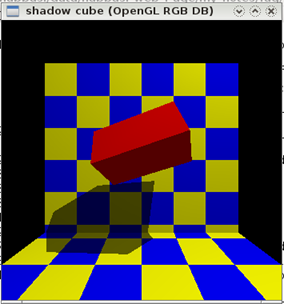

Then, you can start browsing the documentation from the file obj/doc/PANDA_html/index.html DocumentationĪfter configuring the framework in the directory for the building, you can create a preliminary documentation of the framework by executing the following You can start from them to build your own hardware accelerators with bambu. These scripts automatically create subdirectories containing all the results of the execution.

In the directory examples, you can find several different testcases, with the bash scripts for their execution. configure -prefix=/opt/panda -enable-flopoco -enable-icarus -enable-verilator -enable-xilinx -enable-modelsim -enable-altera -enable-opt -enable-lattice -enable-release -with-mentor-license=Ī subset of such tools is obviously acceptable.Īt the end, if the installation has been successful, you can run the tool: $/opt/panda/bin/bambuĪdditional documentation about the configuration, the execution of the test examples, and the creation of the basic documentation of the framework can be found at: Testcases Both Modelsim from Mentor and XSIM/ISIM from Xilinx have such support. Since FloPoCo generates a VHDL-based description, co-simulation requires a mixed-language simulator. In this case, the synthesis/simulation has to be performed using the standard shell command line. Note that the scripts for synthesis and simulation are generated even if the corresponding tools are not configured as described above. enable-release: Remove further tests not useful in a production environment enable-opt: Compile the framework with GCC optimizations enabled enable-debug: add debugging symbols to the binaries enable-verilator: enable Verilator-based simulation enable-icarus: enable Icarus-based simulation

enable-modelsim: enable Modelsim-based simulation directly within the framework enable-nanoxplore: enable BRAVE FPGA NanoXplore RTL synthesis tool execution within the framework enable-lattice: enable Lattice RTL synthesis tool execution within the framework enable-altera: enable Altera RTL synthesis tool execution within the framework enable-xilinx: enable Xilinx RTL synthesis and simulation tools execution
Install gfortran 4.8 install#
In order to install the PandA framework, you need to perform the following steps:ġ) Give write permission to your user on /opt: $chown -R /optĢ) Install required packages (for Ubuntu/Debian/CentOS/Scientific Linux/ArchLinux/Fedora systems, see below)ģ) Prepare the configuration script: $make -f Makefile.initĤ) Create the directory for the building: $mkdir objĥ) Configure PandA: $./configure -prefix=/opt/pandaĬurrently accepted parameters are: -enable-flopoco: add floating point support by leveraging FloPoCo Library HLS Study Quality of Results: PandA 0.9.6.CHStone Quality of Results: PandA 0.9.6.Basic floating point operators Quality of Results: PandA 0.9.6.HLS Study Quality of Results: PandA 0.9.5.CHStone Quality of Results: PandA 0.9.5.Basic floating point operators Quality of Results: PandA 0.9.5.



 0 kommentar(er)
0 kommentar(er)
